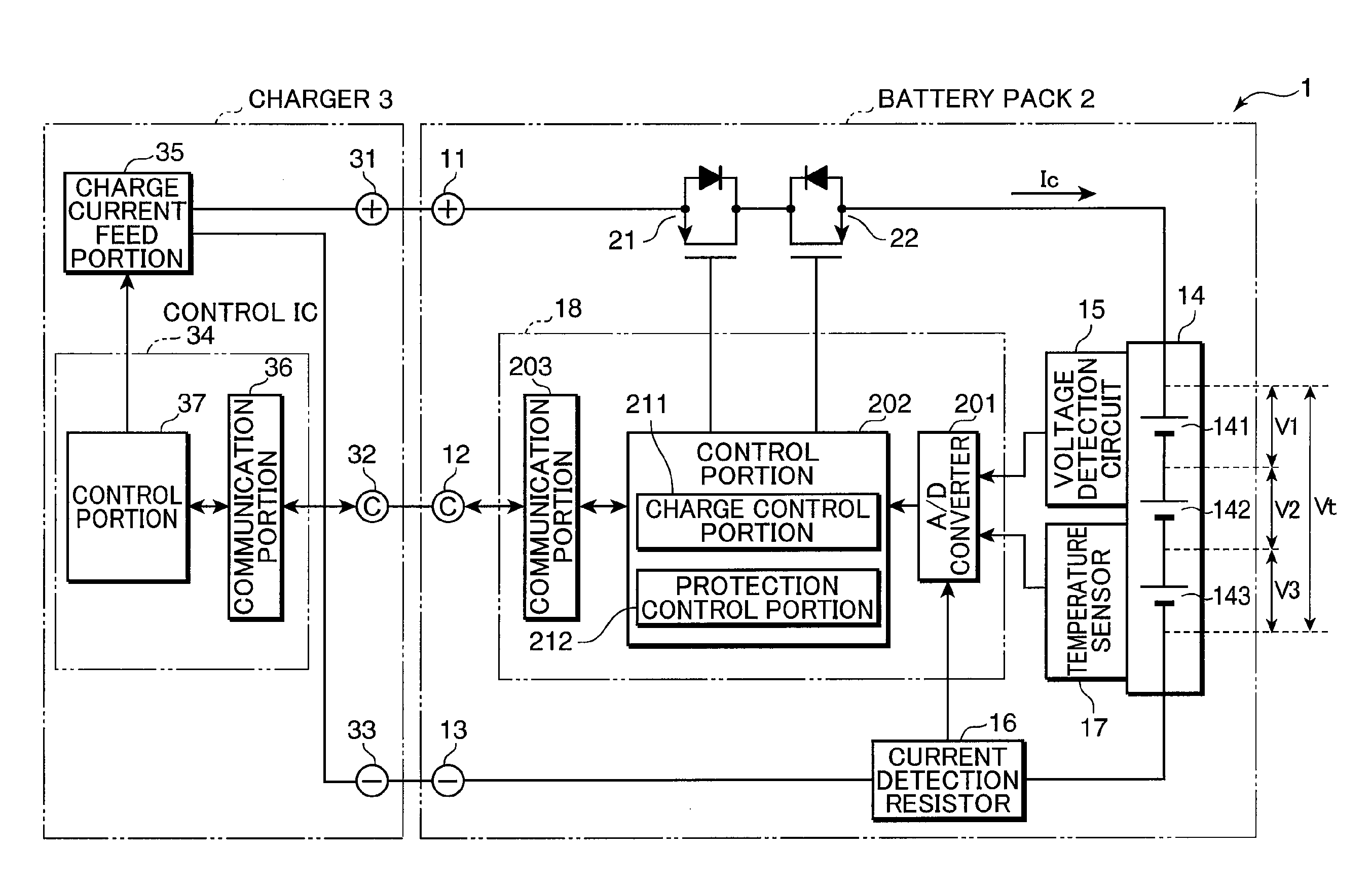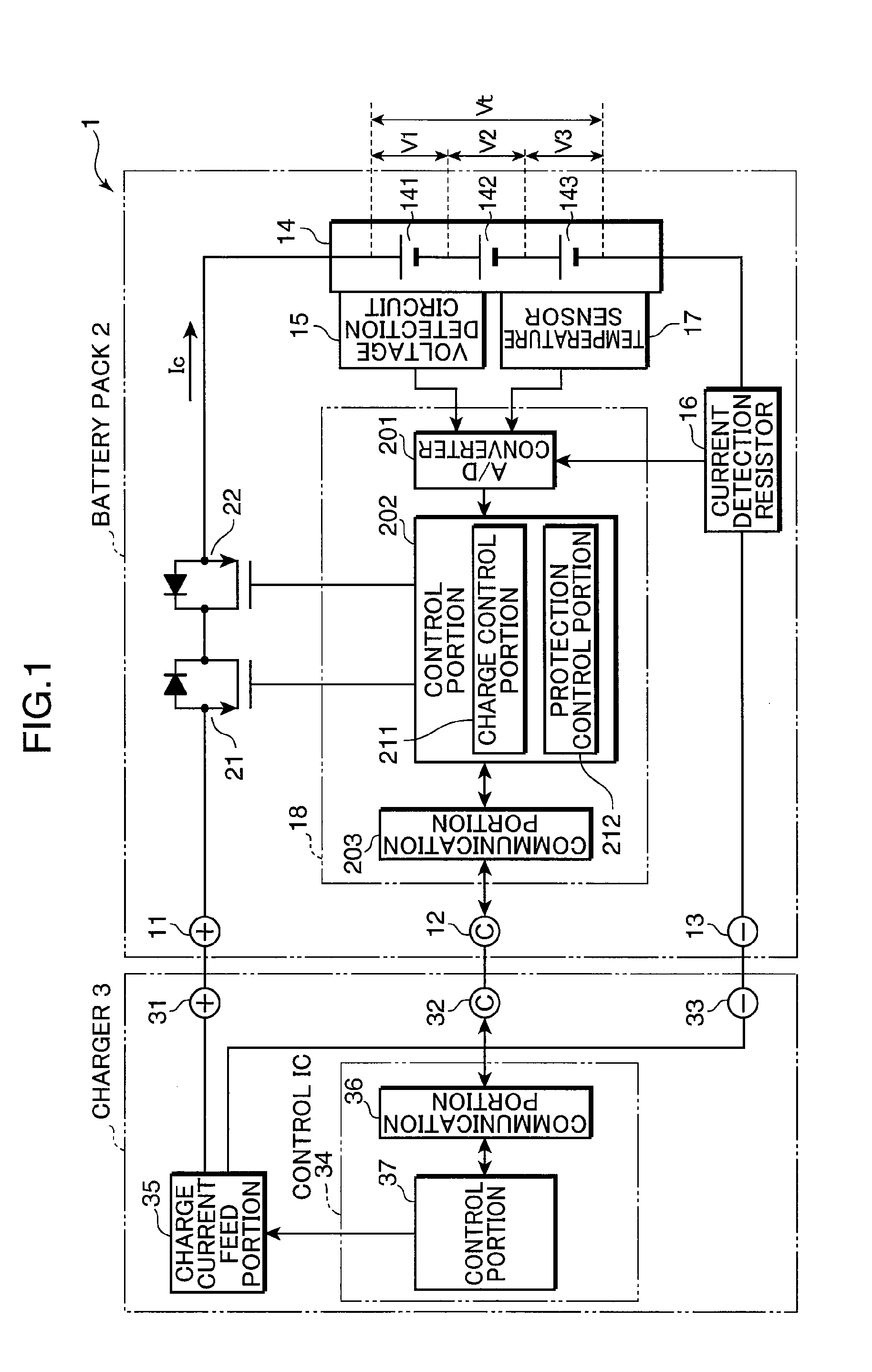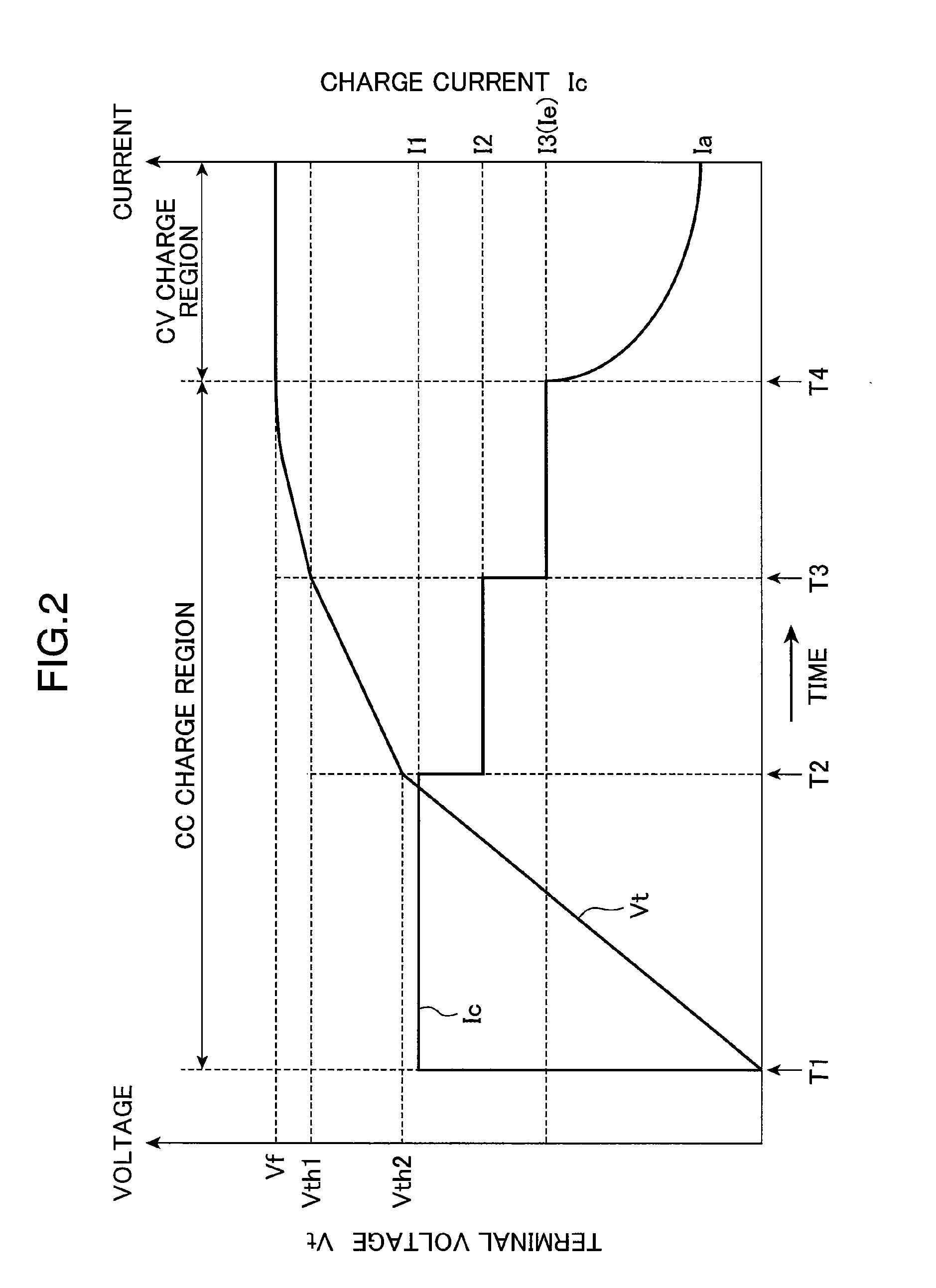Charging system, charger, and battery pack
a charging system and battery technology, applied in the direction of electric vehicles, secondary cell servicing/maintenance, transportation and packaging, etc., can solve the problems of increasing the joule heat generated by a charge current, the battery characteristic is readily deteriorated, and the charge efficiency is significantly deteriorated, so as to reduce the deterioration of the battery characteristic, shorten the charge time of the nonaqueous electrolyte secondary battery, and the effect of hardly deteriorating the battery characteristi
- Summary
- Abstract
- Description
- Claims
- Application Information
AI Technical Summary
Benefits of technology
Problems solved by technology
Method used
Image
Examples
Embodiment Construction
[0024]Hereinafter, one embodiment of the invention will be described with reference to the drawings. Components labeled with the same reference numerals denote the same components and descriptions thereof are omitted. FIG. 1 is a block diagram showing an example of the configuration of a charging system 1 formed of a charger 3 and a battery pack 2 according to one embodiment of the invention. The charging system 1 is formed by providing the battery pack 2 with the charger 3 that charges the battery pack 2. However, an electronic equipment system may be formed by further including an unillustrated load device to which electricity is fed from the battery pack 2. In this case, in contrast to the configuration of FIG. 1 where the battery pack 2 is charged by the charger 3, the battery pack 2 may be attached to the load device so that it is charged via the load device.
[0025]The battery pack 2 includes connection terminals 11, 12, and 13, a set battery 14 (nonaqueous electrolyte secondary...
PUM
| Property | Measurement | Unit |
|---|---|---|
| negative electrode potential | aaaaa | aaaaa |
| terminal voltage | aaaaa | aaaaa |
| negative electrode potentials | aaaaa | aaaaa |
Abstract
Description
Claims
Application Information
 Login to View More
Login to View More - R&D
- Intellectual Property
- Life Sciences
- Materials
- Tech Scout
- Unparalleled Data Quality
- Higher Quality Content
- 60% Fewer Hallucinations
Browse by: Latest US Patents, China's latest patents, Technical Efficacy Thesaurus, Application Domain, Technology Topic, Popular Technical Reports.
© 2025 PatSnap. All rights reserved.Legal|Privacy policy|Modern Slavery Act Transparency Statement|Sitemap|About US| Contact US: help@patsnap.com



